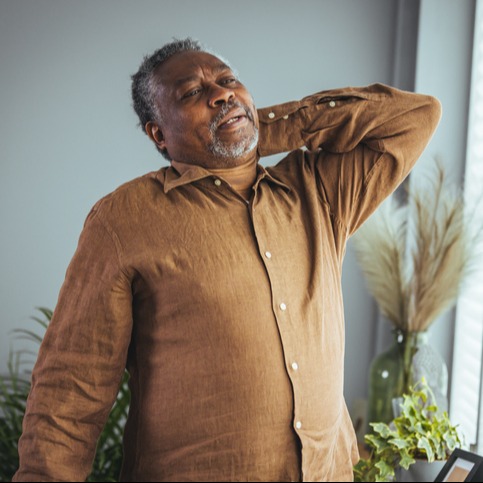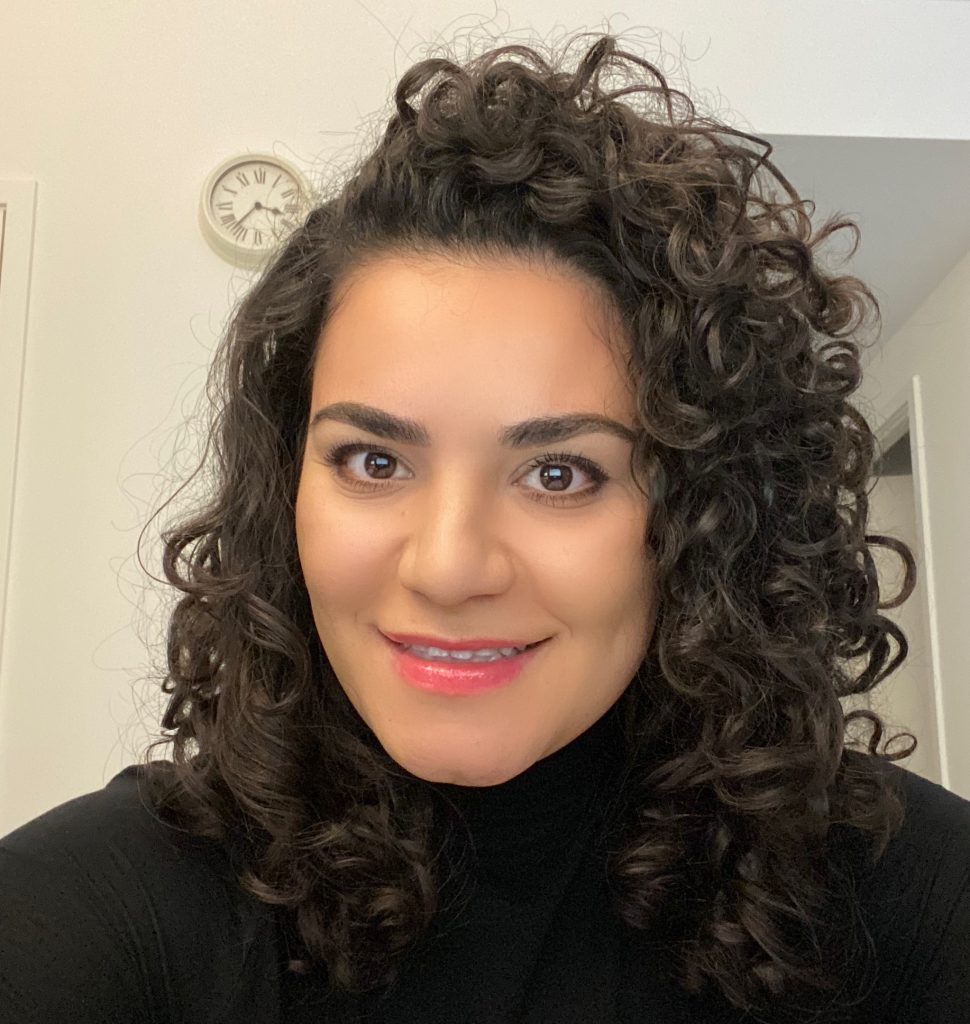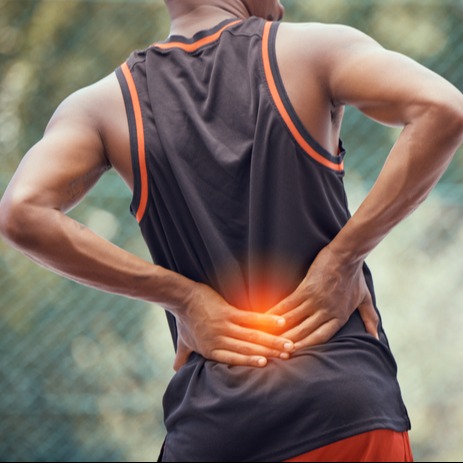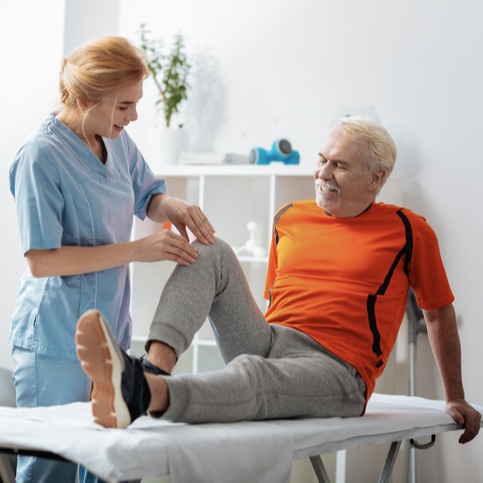
Back pain is a widespread issue impacting numerous individuals, resulting in job-related disability and missed work days. While surgery may be necessary in certain cases, several alternative treatment options exist to effectively alleviate back pain without resorting to invasive procedures. This article explores 11 alternative treatments, including acupuncture, massage therapy, exercise, and chiropractic spinal manipulation. By offering a comprehensive overview, the goal is to empower individuals with back pain to make informed healthcare decisions. It's important to recognize the significance of individual circumstances and consult healthcare professionals for personalized recommendations.
Key Takeaways
Complementary health approaches, such as acupuncture, massage therapy, and spinal manipulation, can be helpful for both acute and chronic low back pain.
Non-drug treatments are recommended as the first-line therapy for chronic low back pain, and complementary health approaches are among the suggested treatment options.
Regular exercise, including activities like walking, tai chi, yoga, and Pilates, can provide long-term relief for back pain.
Consulting with qualified professionals, such as acupuncturists, massage therapists, and chiropractors, can help in finding the most suitable alternative treatment for back pain.
Basics of Low Back Pain
The basics of low back pain include its prevalence among adults and its impact on job-related disability and missed work days. Low back pain is a common condition that affects approximately 80% of adults at some point in their lives. It is the most common cause of job-related disability and can result in significant missed work days. Understanding the basics of low back pain is essential for healthcare providers who desire to serve others.
Most episodes of low back pain are acute, meaning they have a sudden onset and resolve without lasting problems. However, some cases of low back pain can become subacute or chronic. Subacute low back pain lasts between 4 and 12 weeks, while chronic low back pain persists for 12 weeks or longer despite treatment.
Clinical practice guidelines recommend non-drug treatments as the first-line therapy for chronic low back pain. These guidelines are regularly updated based on new evidence and suggest the use of complementary health approaches as treatment options. Acupuncture, massage therapy, and chiropractic spinal manipulation are among the recommended complementary health approaches for low back pain.
Clinical Guidelines for Treating Back Pain
Clinical guidelines for treating back pain recommend non-drug treatments as the first-line therapy for chronic low back pain, including complementary health approaches such as acupuncture, massage therapy, and chiropractic spinal manipulation. These guidelines aim to provide healthcare providers and patients with evidence-based recommendations to make informed decisions about treatment options. Non-drug treatments are recommended as the initial approach for both acute and chronic low back pain, either as standalone therapies or in combination with drug therapy. Complementary health approaches, such as acupuncture, massage therapy, and chiropractic spinal manipulation, are among the suggested treatment options in these guidelines.
What Are Alternative Therapies
Alternative therapies encompass a wide range of non-surgical treatment options for managing back pain. These therapies provide individuals with alternative options to surgery, focusing on natural and holistic approaches to alleviate pain and promote healing. Alternative and holistic therapies for back pain can include acupuncture, massage therapy, exercise, yoga, Pilates, and chiropractic spinal manipulation.
Acupuncture involves the insertion of thin needles into specific points on the body to relieve pain. It has been shown to effectively treat muscle spasms and nerve-related pain. Massage therapy is another alternative therapy that can help release muscle tightness and reduce back pain. Regular massage sessions can lead to fewer symptoms and decreased reliance on medication.
Exercise plays a vital role in managing back pain by relieving pressure on the disks and improving overall back strength. Incorporating regular exercise, such as walking or muscle-strengthening workouts, into a daily routine can provide long-term relief. Yoga and Pilates are also beneficial for back pain, combining stretching and strength exercises to alleviate discomfort.
Chiropractic spinal manipulation involves adjustments made by a professional to reduce back pain. This treatment can be as effective, if not more effective, than other treatments and is suitable for individuals without nerve pain or damage.
Alternative therapies provide individuals with additional options for managing back pain without resorting to surgery. By exploring these non-invasive approaches to control chronic back pain, individuals can find relief and promote their overall well-being.
Acupuncture as a Treatment Option
Acupuncture offers a non-surgical solution for individuals seeking relief from back pain. Rooted in ancient Chinese practice, acupuncture involves the insertion of thin needles into specific points on the body to alleviate pain and promote healing. Many individuals have reported the effectiveness of acupuncture in reducing back pain, particularly caused by muscle spasms and nerve-related issues.
The relief provided by acupuncture can extend from a few hours to several weeks after treatment, making it a viable option for those in search of long-lasting relief. Choosing a qualified acupuncturist is crucial, and recommendations from friends, family, or healthcare providers can aid in making this decision.
In addition to acupuncture, various alternative treatment options can effectively manage back pain. Massage therapy, for instance, aids in releasing muscle tightness and reducing pain. Regular massage sessions can result in fewer symptoms and increased activity, potentially reducing the need for medication.
Incorporating exercises such as stretching, walking, and muscle-strengthening workouts can also provide relief by alleviating pressure on the disks. Consistent exercise integrated into daily routines can yield long-term benefits for managing back pain. Yoga and Pilates, combining stretching and strength exercises, stand out as recommended options to explore.
Chiropractic spinal manipulation, administered by a licensed professional, can effectively reduce back pain through spine adjustments. It may prove as effective, if not more so, than other therapies. However, it's crucial to note that chiropractic treatment is suitable for individuals without nerve pain or damage.
Massage Therapy for Back Pain Relief
Massage therapy presents a therapeutic approach to managing back pain and promoting relief. It proves highly effective in releasing muscle tightness and reducing back pain, with regular sessions leading to diminished symptoms and increased activity, potentially reducing the need for medication. Beyond its physical benefits, massage therapy also contributes to a sense of relaxation and well-being, positively impacting overall health.
Massage therapists employ various techniques to target specific areas of pain and tension in the back. These may include deep tissue massage, Swedish massage, and myofascial release. Through the application of pressure and manipulation of the body's soft tissues, massage therapy can alleviate muscle spasms, enhance circulation, and promote healing.
For those seeking self-massage techniques, learning proper methods from a massage therapist or online resources can be beneficial. These techniques can be conveniently and cost-effectively performed at home, providing an accessible way to manage back pain.
When considering massage therapy for back pain relief, consulting with a licensed and experienced massage therapist is crucial. They possess the knowledge and skills to tailor treatments to individual needs, ensuring the application of proper techniques. By incorporating massage therapy into a comprehensive treatment plan, individuals can reap the benefits of reduced chronic pain and an improved quality of life.
The Role of Exercise in Treating Back Pain
Regular exercise plays a crucial role in the treatment of back pain. Engaging in physical activity can help relieve pressure on the disks and improve overall back health. For those who work at a desk, taking regular breaks to engage in stretching and walking is important. Incorporating regular exercise, such as walking or muscle-strengthening workouts, into your daily routine is essential for long-term back pain relief.
In addition to traditional exercises, tai chi is recommended as an exercise option for low back pain. Tai chi combines gentle movements, deep breathing, and meditation, which can help improve flexibility, balance, and muscle strength. Incorporating exercise into your daily routine not only helps manage back pain, but it also promotes overall health and well-being.
Furthermore, yoga and Pilates are other exercises that can provide relief for back pain. Both practices combine stretching and strength exercises, which can help alleviate pain and improve flexibility. Aim to practice yoga or Pilates 3 to 4 times a week, gradually increasing to an hour a day. By regularly incorporating these exercises into your routine, you may experience decreased back pain for up to 6 months.
Yoga and Pilates for Back Pain Management
Yoga and Pilates are effective methods for managing back pain. Both practices combine stretching and strength exercises, providing relief and promoting overall back health. Incorporating yoga or Pilates into your routine can lead to decreased back pain for up to six months. Aim to practice three to four times a week, gradually increasing to an hour a day. You can also incorporate short sessions of yoga or Pilates into your daily routine, such as ten minutes in the morning and before bed. Regular practice of these exercises can lead to long-lasting benefits and an improved quality of life.
Yoga and Pilates focus on strengthening the core muscles, improving flexibility, and promoting proper alignment. These exercises help relieve tension and stress in the back, reducing pain and discomfort. Additionally, they improve posture, which is crucial for preventing back pain in the long term.
When practicing yoga or Pilates for back pain management, it is important to listen to your body and modify exercises as needed. Consult with a qualified instructor who can guide you through the proper techniques and help tailor the exercises to your specific needs. Remember to start slowly and gradually increase the intensity and duration of your practice.
Incorporating yoga and Pilates into your back pain management plan can provide significant relief and improve your overall well-being. These practices emphasize the mind-body connection and can help you develop a deeper understanding of your body's needs. By committing to regular practice, you can experience the benefits of reduced back pain and increased mobility.
Chiropractic Spinal Manipulation for Back Pain
Chiropractic spinal manipulation is a highly effective alternative treatment option for managing back pain. This non-surgical approach involves the manual adjustment of the spine by a licensed chiropractor or professional and is particularly suitable for individuals who do not have nerve pain or damage.
Chiropractic treatment has been found to be as effective, if not more effective, than other treatments for back pain. Many patients experience immediate relief after a session, and long-term benefits can be achieved with a series of 12 sessions of spinal manipulative therapy.
The goal of chiropractic spinal manipulation is to restore proper alignment and mobility to the spine, relieving pain and improving overall function. The chiropractor uses their hands or specialized tools to apply controlled force to specific areas of the spine, helping alleviate pressure on the nerves, reduce pain signals, and promote healing.
In addition to addressing back pain, chiropractic care can also provide benefits for other musculoskeletal conditions, such as neck pain, headaches, and joint pain. It is a safe and non-invasive option in physical medicine that can be used in conjunction with other treatments or as a standalone therapy.
If you are considering chiropractic spinal manipulation for your back pain, it is important to consult with a licensed professional. They can assess your condition, create a personalized treatment plan, and guide you through the process to ensure optimal results.
Achieving a Healthy Weight for Back Pain Relief
To address back pain effectively, it is essential to consider achieving a healthy weight as a means of long-term relief and overall improvement in function. Maintaining a healthy weight can help alleviate the strain on the back and reduce the risk of developing chronic back pain. Excess weight puts additional stress on the spine, leading to increased pressure on the intervertebral discs, joints, and muscles, which can result in pain and discomfort.
Losing weight can have a positive impact on back pain by reducing inflammation, improving blood flow, and increasing flexibility and mobility. It can also enhance the effectiveness of other non-surgical treatment options, such as exercise, physical therapy, and chiropractic manipulation. Additionally, achieving a healthy weight can improve overall health and well-being, reducing the risk of other health conditions that may contribute to back pain, such as diabetes and heart disease.
To achieve a healthy weight, it is important to adopt a balanced and sustainable approach to eating and physical activity. This may include incorporating a variety of nutritious foods into your diet, practicing portion control, and engaging in regular exercise. Consulting with a healthcare professional or a registered dietitian can provide guidance and support in developing a personalized plan for weight management.
Mindfulness Practices for Managing Back Pain
Mindfulness practices offer a holistic approach to managing back pain, promoting relaxation and enhancing overall well-being. These practices involve focusing one's attention on the present moment and accepting it without judgment. By cultivating mindfulness, individuals can develop a greater awareness of their body and its sensations, including any discomfort or pain in the back.
One mindfulness practice that can be beneficial for managing back pain is meditation. This involves sitting in a quiet and comfortable space, focusing on the breath, and observing any sensations that arise in the body. Through regular meditation practice, individuals can learn to observe their back pain without becoming overwhelmed by it and develop a greater sense of control over their pain.
Another mindfulness practice that can be helpful for managing back pain is body scan meditation. This involves systematically bringing attention to different parts of the body, including the back, and noticing any sensations or tension that may be present. By cultivating a non-judgmental awareness of the back, individuals can learn to release tension and promote relaxation in the area.
Yoga, a mind-body practice that combines physical postures, breathing exercises, and meditation, can also be beneficial for managing back pain. Many yoga poses focus on stretching and strengthening the back muscles, promoting flexibility and reducing pain. Additionally, the mindful awareness cultivated during yoga practice can help individuals develop a greater understanding of their body and its limitations, allowing them to modify poses and avoid further strain or injury.
NCCIH-Funded Research on Back Pain Treatments
The National Center for Complementary and Integrative Health (NCCIH) has funded research to explore various treatment options for back pain, expanding our understanding of alternative medicine approaches to managing this common condition. This research has provided valuable insights into the effectiveness and safety of complementary health approaches for back pain. For instance, studies have shown that acupuncture, electromyography biofeedback, low-level laser therapy, mindfulness-based stress reduction, progressive muscle relaxation, spinal manipulation, tai chi, and yoga may be helpful for chronic low back pain. Additionally, acupuncture, massage therapy, and spinal manipulation have been found to be beneficial for acute low back pain. These findings highlight the potential of these alternative treatments in relieving back pain and improving overall well-being.
It is important to note that while these approaches have shown promise, individual health and circumstances may affect their safety and effectiveness. Therefore, it is crucial to consult with a healthcare professional before starting any new treatment. Seeking professional guidance can help ensure that the chosen approach aligns with your specific needs and health condition.
In the next section, we will discuss the importance of getting professional help for your back pain and explore the various healthcare providers who can assist you in managing and treating your condition effectively.
Getting Professional Help for Your Back Pain
Seeking guidance from healthcare professionals is crucial for effectively managing and treating back pain. When it comes to back pain, it is important to consult with a healthcare provider who specializes in musculoskeletal pain and conditions. They have the knowledge and expertise to assess your specific situation and provide appropriate treatment options.
A healthcare professional can conduct a thorough evaluation to determine the underlying cause of your back pain. They may order diagnostic tests such as X-rays or MRI scans to obtain a clearer picture of the problem. Based on the findings, they can recommend appropriate treatment approaches tailored to your needs.
In addition to diagnosis and treatment, healthcare professionals can also provide valuable education and advice on self-care strategies. They can guide you on proper body mechanics, ergonomics, and exercises that can help alleviate pain and prevent further injury. They may also recommend complementary therapies such as physical therapy, chiropractic care, or acupuncture, which has shown to be effective in managing back pain.
Keyhole Sacroiliac Joint Fusion Procedure for Back Pain
Continuing the discussion on alternative treatment options for back pain, one procedure that can be considered is the Keyhole Sacroiliac Joint Fusion Procedure. This minimally invasive surgery aims to alleviate and treat chronic back pain caused by sacroiliac joint dysfunction. The sacroiliac joint, located at the base of the spine, connects the sacrum to the pelvis. When this joint becomes dysfunctional, it can lead to significant pain and discomfort.
During the Keyhole Sacroiliac Joint Fusion Procedure, small incisions are made near the joint, and specialized instruments are used to stabilize and fuse the joint. This procedure offers several advantages over traditional open surgery, including smaller incisions, reduced tissue damage, and a quicker recovery time.
The keyhole approach allows for the precise placement of screws or implants to fuse the joint, providing stability and relieving pain. This procedure can be an effective option for individuals who have not found relief from non-surgical treatments such as physical therapy, various pain medications alone, or injections.
It is important to consult with a qualified healthcare professional to determine if the Keyhole Sacroiliac Joint Fusion Procedure is appropriate for your specific condition. They will evaluate your medical history, conduct a thorough examination, and discuss the potential risks and benefits of the procedure. By exploring alternative treatment options like the Keyhole Sacroiliac Joint Fusion Procedure, individuals experiencing back pain can find potential relief and improve their quality of life.
Acromioclavicular Joint Injury and Its Common Occurrence in Contact Sports
Due to the common occurrence of acromioclavicular (AC) joint injuries in contact sports, it is important to understand the causes, symptoms, and treatment options for this type of injury. The AC joint, or acromioclavicular joint, is located at the top of the shoulder where the collarbone meets the shoulder blade. In contact sports such as football, rugby, and hockey, the AC joint is often subjected to direct impact or falls onto the shoulder, leading to injury.
AC joint injuries can range from mild to severe, with symptoms including pain, swelling, tenderness, limited range of motion, and a visible deformity or bump above the shoulder. Treatment options for AC joint injuries vary depending on the severity of the injury. Mild cases can often be managed with rest, ice, compression, and elevation (RICE), along with physical therapy exercises to strengthen the shoulder muscles and improve range of motion.
For more severe AC joint injuries, additional treatment options may be necessary. These can include the use of a sling or shoulder brace to immobilize the joint, corticosteroid injections to reduce inflammation and pain, and, in some cases, surgical intervention to repair or reconstruct the damaged joint.
It is important for athletes and individuals participating in contact sports to be aware of the risk of AC joint injuries and take appropriate precautions to prevent them. This can include wearing protective gear such as shoulder pads or braces, practicing proper techniques and form, and maintaining overall strength and conditioning to reduce the risk of injury.
Understanding Transverse Myelitis and Its Impact on the Spine
Understanding the impact of Transverse Myelitis on the spine requires a comprehensive examination of other neurological disorders, along with its causes and effects. Transverse Myelitis is a neurological disorder that affects the spinal cord, leading to inflammation and damage. This condition can result in a range of symptoms, including back pain, muscle weakness, sensory disturbances, and loss of bladder or bowel control. The exact cause of Transverse Myelitis is often unknown, but it is believed to be related to autoimmune or viral infections, spinal cord injuries, or other underlying medical conditions.
When Transverse Myelitis affects the spine, it can significantly impact an individual's quality of life and mobility. The inflammation and damage to the spinal cord can disrupt the transmission of signals between the brain and the rest of the body, leading to various neurological symptoms. Treatment for Transverse Myelitis focuses on managing symptoms, reducing inflammation, and promoting recovery. This may involve a combination of medications, physical therapy, occupational therapy, and assistive devices.
For individuals experiencing back pain associated with Transverse Myelitis, alternative treatment options may be considered. These can include acupuncture, massage therapy, exercise, and chiropractic spinal manipulation. These approaches aim to alleviate pain, improve mobility, and enhance overall well-being. It is important to consult with healthcare professionals and specialists to determine the most appropriate treatment plan for managing Transverse Myelitis and its impact on the spine. By understanding the causes and effects of this condition, individuals can make informed decisions about their healthcare and seek the most effective treatment options available.
Healing Achilles Tendon Injuries and Their Time Frame
To facilitate the healing process of Achilles tendon injuries, it is important to implement appropriate treatment measures. Achilles tendon injuries, which can cause significant pain and discomfort, often occur due to overuse or sudden trauma. The healing time frame for these injuries can vary depending on the severity of the injury and the individual's overall health.
In general, mild to moderate Achilles tendon injuries can take several weeks to a few months to heal. During this time, it is crucial to rest the affected leg and avoid activities that may further strain the tendon. Applying ice to the area can help reduce swelling and inflammation, while compression and elevation can aid in promoting circulation and reducing pain.
Physical therapy exercises are essential for strengthening the Achilles tendon and improving flexibility once the acute phase of healing has passed. These exercises may include stretches, calf raises, and eccentric heel drops. It is crucial to follow the guidance of a qualified healthcare professional or physical therapist to ensure proper technique and avoid re-injury.
For more severe Achilles tendon injuries, such as complete tears, surgical intervention may be necessary. The recovery time for surgical repair can range from several months to a year, depending on the individual's healing capacity and adherence to rehabilitation protocols.
Addressing the Rise of Chronic Neck Pain From "Tech Neck
The prevalence of chronic neck pain caused by "Tech Neck" has significantly increased in recent years. "Tech Neck" refers to the strain and discomfort experienced in the neck and upper back due to prolonged use of electronic devices such as smartphones, tablets, and laptops. With the rise in technology use, more and more people are experiencing symptoms such as stiffness, soreness, and muscle tension in their necks.
To address the rise of chronic neck pain from 'Tech Neck,' it is important to adopt healthy habits and make lifestyle changes. First and foremost, it is crucial to maintain proper posture while using electronic devices. This means keeping the head aligned with the spine and avoiding excessive bending or tilting of the neck. Taking regular breaks from device usage and incorporating stretching exercises for the neck and upper back can also provide relief and prevent further strain.
In addition to postural adjustments, other alternative treatment options can be beneficial in managing chronic neck pain. These include physical therapy, massage therapy, chiropractic adjustments, and acupuncture. Physical therapy focuses on strengthening the muscles in the neck and upper back, while massage therapy and chiropractic adjustments aim to alleviate muscle tension and improve spinal alignment. Acupuncture, on the other hand, involves the insertion of thin needles at specific points to promote pain relief and relaxation.
Improving Care for Patients With Metastatic Bone Disease
Improving care for patients with metastatic bone disease requires a multidisciplinary approach. Metastatic bone disease occurs when cancer spreads to the bones from another part of the body. It is a serious condition that can cause severe pain, fractures, and other complications. To provide the best care for these patients, a team of healthcare professionals, including oncologists, orthopedic surgeons, palliative care specialists, and physical therapists, must work together.
The primary goal of treatment for metastatic bone disease is to alleviate pain and improve the quality of life. This can be achieved through various interventions, such as radiation therapy, medication, surgical interventions, and supportive care. Radiation therapy is commonly used to relieve pain and prevent fractures by targeting the cancer cells in the bone. Medications, such as bisphosphonates and denosumab, can help strengthen the bones and reduce the risk of fractures. Surgical interventions, such as stabilization procedures or joint replacements, may be necessary to restore function and mobility.
In addition to medical interventions, supportive care plays a crucial role in improving the overall well-being of patients with metastatic bone disease. This may include physical therapy to improve strength and mobility, occupational therapy to assist with daily activities, and palliative care to manage pain and provide emotional support.
Frequently Asked Questions
How Effective Are Natural Products in Treating Low Back Pain?
Natural products, such as cayenne preparations, may provide relief for low back pain. However, their effectiveness varies, and they may have side effects or interact with medications. Consult with a healthcare professional before using natural products for back pain.
Are There Any Potential Side Effects or Interactions With Medications When Using Complementary Health Approaches for Low Back Pain?
Complementary health approaches for low back pain, such as acupuncture and massage therapy generally have good safety records. However, individual health and circumstances must be considered as natural products may have side effects or interact with medications.
What Are the Recommended Treatment Options for Acute Low Back Pain?
For acute low back pain, recommended treatment options include acupuncture, massage therapy, and spinal manipulation. These approaches have shown effectiveness in providing relief and reducing the need for medication. It is important to consult with qualified professionals for proper treatment.
Is There Scientific Evidence Supporting the Use of Dry Needling for Low Back Pain?
Dry needling for low back pain has shown potential benefits, but more high-quality research is needed to establish its effectiveness. It may be considered as a complementary treatment option, but consultation with a healthcare professional is recommended.
How Long Does the Relief From Acupuncture Treatment Typically Last for Low Back Pain?
The relief from acupuncture treatment for low back pain can last from a few hours to a few weeks. It is a top alternative treatment that effectively treats muscle spasms and nerve-related pain. Consult with a qualified acupuncturist for optimal results.
Rely on PlanetDrugsDirect.com to Buy Online Prescription Drugs
As a trusted prescription referral service, we offer important benefits whenever you order online. Each of our partner pharmacies and/or government-approved dispensaries is committed to providing the best experience possible of any online prescription referral service on the internet. We offer:
Low prices
Quick turn-around times
Generic and brand-name medications
Unparalleled customer service
Sources
Exercise therapy for chronic low back pain - PubMed (nih.gov)
Diagnosis and treatment of acute low back pain - PubMed (nih.gov)
Yoga treatment for chronic non-specific low back pain - PubMed (nih.gov)
Yoga, Physical Therapy, or Education for Chronic Low Back Pain: A Randomized Noninferiority Trial - PubMed (nih.gov)
Acupuncture for chronic nonspecific low back pain - PubMed (nih.gov)
Is dry needling effective for low back pain?: A systematic review and PRISMA-compliant meta-analysis - PubMed (nih.gov)
 Medically reviewed by
Medically reviewed by 





